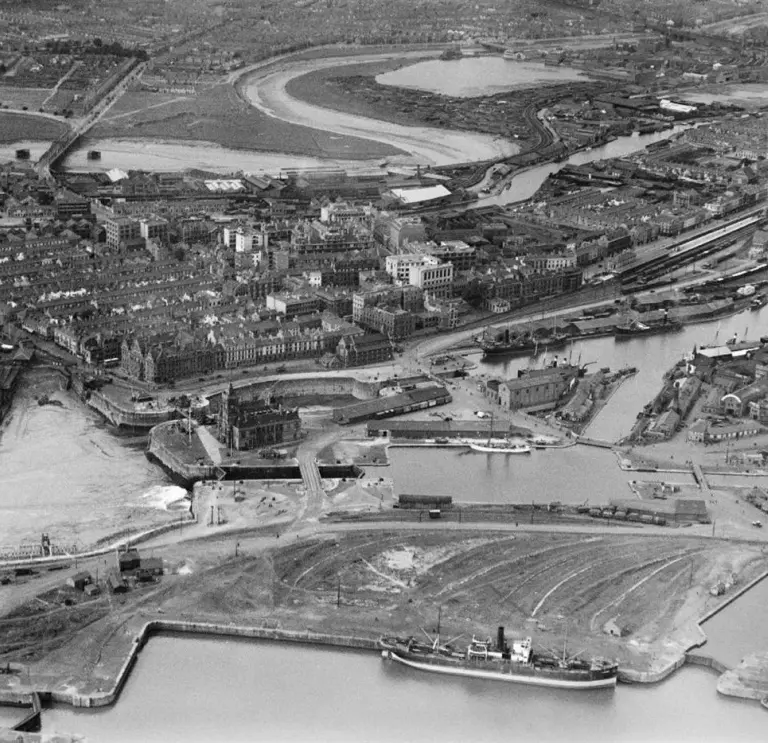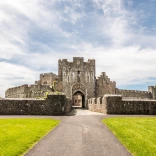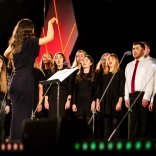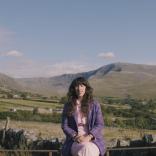Wales and Ireland are not only geographically close – within 108 miles of each other – but they share a special bond as Celtic siblings. Over the centuries, the two countries have inspired each other, helped each other, and provided opportunities for collaboration and growth. Here, we look at some of the bonds between the two countries.
Linguistic links
The languages of Wales and Ireland belong to the same family; they are both classed as living Celtic languages, along with Breton and Scottish Gaelic. In Wales and Ireland, it's normal for schoolchildren to be taught their native language as part of the curriculum. Figures from Ireland’s 2016 Census show that 1.7 per cent of the population speak Irish Gaelic every day. In Wales, it’s 16.3 per cent of the population speaking Welsh every day.
While both languages originate from the same source, the written and spoken forms are different. A Welsh speaker would find it hard to understand Irish Gaelic. The alphabets are slightly different too - the Irish alphabet uses 18 letters, while the Welsh alphabet has 29.
Despite these differences, both countries are committed to keeping their Celtic languages alive through educational policy, cultural events, literature, and music.
Was St Patrick actually Welsh?
The 17 March always sees a host of enthusiastic St Patrick's Day celebrations around the world. Most of them are in Ireland (he's their patron saint), America, and Wales – the latter being because St Patrick may have actually been Welsh. At the time, Wales as it is now didn't exist; it was part of the land that made up Roman Britain. Records show that St Patrick was born back in AD387 in a place called Bannavem Taburniae, which some people believe to be Banwen in Neath Port Talbot.
According to historical records, St Patrick was born into a Christian family who lived in a villa. He went to school until he was abducted as a teenager and forced into slavery in Ireland, working as a shepherd. He eventually escaped and sailed home, where he trained as a missionary at the Church of Llantwit Major, South Wales, and became a priest before going back to Ireland as its first bishop. Whether this actually happened is unproven, but it's an interesting and romantic story to say the least, and one that binds Wales and Ireland together.

Irish hands helped build Cardiff’s docklands
Around the time of the Great Irish Famine in the 1840s, Cardiff was thriving with the development of the docks and railways. The 2nd Marquis of Bute, who became the richest man in the world through developing the coal and iron industry, brought thousands of Irish families over to Cardiff to work on the docks. The influx meant that some 40 per cent of the people in Cardiff were Irish, many of whom lived in purpose-built housing in communities close to the docks. While the accommodation wasn't of a great standard, the community spirit was vibrant, busy and fun. One area, Newtown, was actually known as Little Ireland.
Once the docks were completed, Irish residents stayed on to carry out work developing other parts of the city. These settlements are now long gone, but the people and places live on in the stories passed down from one generation to the next and through organisations like the Newtown Association.


Cultural exchange
Over 10 days in August, Lorient Celtic Festival in France draws people from all over the world together to experience music from Celtic countries – including Wales and Ireland. Through over 120 shows, musical performances, masterclasses, parades and arts sessions, 750,000 visitors and spectators explore Celtic identity of past, present and future.
In 2019, a group of young Welsh, Irish and Scottish musicians took part in a project called Mamiaith (‘mother tongue'). It was a collaboration organised by Wales Arts International to explore issues around indigenous language, culture and identity, looking at how music carries language while also transcending language across the globe.
These are just a couple of the many cross-border celebrations of the links, similarities and differences between the Celtic countries. One thing that Wales and Ireland definitely have in common is a love of having a good time with friends new and old! For centuries, the Irish have inspired the Welsh and vice versa, with artists, musicians, writers and performers travelling to their Celtic counterparts for inspiration, exploration and discovery.
Modern business connections
Ireland is Wales' fourth largest export market, with the value of Welsh exports to Ireland in 2020 reaching £1.2 billion. Around 80 Irish companies employ 5,000 people in Wales.
At any time, there are research projects taking place with teams from Welsh and Irish universities. Aberystwyth University has a whole department dedicated to the relationship between Wales and its Celtic family - the Department of Welsh and Celtic Studies. It specialises in the literature and language of the Celtic countries from the 6th century to today, and collaborates on research with universities in Ireland, Scotland, France and beyond.
The BUCANIER project (which stands for 'Building Clusters and Networks in Innovation Enterprise and Research'), supports innovation and growth in and between Wales and Ireland. It focuses on the food and drink, life sciences and renewable energy industries. Around 120 small businesses in Wales and Ireland are benefiting from the €2.9 million EU funded scheme over three years. The support available from the fund can help with idea generation, development, product testing, services planning, knowledge sharing, cross-border trade and job creation.
There's a dedicated Consul General, Denise Hanrahan, who represents Ireland in Wales, and a full-time representative of the Welsh Government based in the British Embassy in Dublin. Together, they work to ensure the relationship between Wales and Ireland remains strong.





